Copper Dissolution from Black Copper Ore under Oxidizing and Reducing Conditions
Abstract
:1. Introduction
2. Materials and Methods
2.1. Experimental Procedure
2.1.1. Sample Characterization
2.1.2. Leaching Experiments
3. Results and Discussion
3.1. Samples Characterization
3.2. Leaching Test
3.3. Residues Characterization
4. Conclusions
Author Contributions
Funding
Acknowledgments
Conflicts of Interest
References
- Münchmeyer, C. Exotic deposits-products of lateral migration of supergene solutions from porphyry copper deposits. In Andean Copper Deposits: New Discoveries, Mineralization, Styles and Metallogeny; Society of Economic Geologists, Special Publication: Tulsa, OK, USA, 1996; pp. 43–58. [Google Scholar]
- Pinget, M.; Dold, B.; Fontboté, L. Exotic mineralization at Chuquicamata, Chile: Focus on the copper wad enigma. In Proceedings of the 10th Swiss Geoscience Meeting, Bern, Swiss, 16–17 November 2012; pp. 88–89. [Google Scholar]
- Riquelme, R.; Tapia, M.; Campos, E.; Mpodozis, C.; Carretier, S.; González, R.; Muñoz, S.; Fernández-Mort, A.; Sanchez, C.; Marquardt, C. Supergene and exotic Cu mineralization occur during periods of landscape stability in the Centinela Mining District, Atacama Desert. Basin Res. 2018, 30, 395–425. [Google Scholar] [CrossRef]
- Pincheira, M.; Dagnini, A.; Kelm, U.; Helle, S. Copper Pitch Y Copper Wad: Contraste Entre Las Fases Presentes En Las Cabezas Y En Los Ripios En Pruebas De Mina sur, Chuquicamata. In Proceedings of the X Congreso Geológico Chileno, Concepción, Chile, 6–10 October 2003; p. 10. [Google Scholar]
- Mote, T.I.; Becker, T.A.; Renne, P.; Brimhall, G.H. Chronology of exotic mineralization at El Salvador, Chile, by 40Ar 39Ar dating of copper wad and supergene alunite. Econ. Geol. 2001, 92, 351–366. [Google Scholar] [CrossRef]
- Helle, S.; Pincheira, M.; Jerez, O.; Kelm, U. Sequential extraction to predict the leaching potential of refractory black copper ores. In Proceedings of the XV Balkan Mineral Processing Congress, Sozopol, Bulgaria, 12–16 June 2013; pp. 109–111. [Google Scholar]
- Velásquez-Yévenes, L.; Quezada-Reyes, V. Influence of seawater and discard brine on the dissolution of copper ore and copper concentrate. Hydrometallurgy 2018, 180, 88–95. [Google Scholar] [CrossRef]
- Mukherjee, A.; Raichur, A.M.; Modak, J.M.; Natarajan, K.A. Bioprocessing of polymetallic Indian Ocean nodules using a marine isolate. Hydrometallurgy 2004, 73, 205–213. [Google Scholar] [CrossRef]
- Acharya, R.; Ghosh, M.K.; Anand, S.; Das, R.P. Leaching of metals from Indian ocean nodules in SO2-H2O-H2SO4-(NH4)2SO4 medium. Hydrometallurgy 1999, 53, 169–175. [Google Scholar] [CrossRef]
- Senanayake, G. A mixed surface reaction kinetic model for the reductive leaching of manganese dioxide with acidic sulfur dioxide. Hydrometallurgy 2004, 73, 215–224. [Google Scholar] [CrossRef]
- Naik, P.K.; Sukla, L.B.; Das, S.C. Aqueous SO2 leaching studies on Nishikhal manganese ore through factorial experiment. Hydrometallurgy 2000, 54, 217–228. [Google Scholar] [CrossRef]
- Sinha, M.K.; Purcell, W. Reducing agents in the leaching of manganese ores: A comprehensive review. Hydrometallurgy 2019, 187, 168–186. [Google Scholar] [CrossRef]
- Sahoo, R.N.; Naik, P.K.; Das, S.C. Leaching of manganese from low-grade manganese ore using oxalic acid as reductant in sulphuric acid solution. Hydrometallurgy 2001, 62, 157–163. [Google Scholar] [CrossRef]
- Jiang, T.; Yang, Y.; Huang, Z.; Qiu, G. Simultaneous leaching of manganese and silver from manganese-silver ores at room temperature. Hydrometallurgy 2003, 69, 177–186. [Google Scholar] [CrossRef]
- Jiang, T.; Yang, Y.; Huang, Z.; Zhang, B.; Qiu, G. Leaching kinetics of pyrolusite from manganese-silver ores in the presence of hydrogen peroxide. Hydrometallurgy 2004, 72, 129–138. [Google Scholar] [CrossRef]
- Das, S.C.; Sahoo, P.K.; Rao, P.K. Extraction of manganese from low-grade manganese ores by FeSO4 leaching. Hydrometallurgy 1982, 8, 35–47. [Google Scholar] [CrossRef]
- Bafghi, M.S.; Zakeri, A.; Ghasemi, Z.; Adeli, M. Reductive dissolution of manganese ore in sulfuric acid in the presence of iron metal. Hydrometallurgy 2008, 90, 207–212. [Google Scholar] [CrossRef]
- Kanungo, S.B. Rate process of the reduction leaching of manganese nodules in dilute HCl in presence of pyrite. Part II: Leaching behavior of manganese. Hydrometallurgy 1999, 52, 331–347. [Google Scholar] [CrossRef]
- Helle, S.; Kelm, U.; Barrientos, A.; Rivas, P.; Reghezza, A. Improvement of mineralogical and chemical characterization to predict the acid leaching of geometallurgical units from Mina Sur, Chuquicamata, Chile. Miner. Eng. 2005, 18, 1334–1336. [Google Scholar] [CrossRef]
- Menzies, A.; Campos, E.; Hernández, V.; Sola, S.; Riquelme, R. Understanding Exotic-Cu Mineralisation Part II: Characterization of “Black Copper”ore (Cobre Negro). In Proceedings of the 13th SGA Biennial Meeting, Nancy, France, 24–27 August 2015; pp. 3–6. [Google Scholar]
- Han, K.; Fuerstenau, D. Acid leaching of ocean floor manganese at elevated temperature. Int. J. Miner. Process. 1975, 2, 163–171. [Google Scholar] [CrossRef]
- Zakeri, A.; Bafghi, M.S.; Shahriari, S.; Das, S.C.; Sahoo, P.K.; Rao, P.K. Dissolution kinetics of manganese dioxide ore in sulfuric acid in the presence of ferrous ion. Hydrometallurgy 2007, 8, 22–27. [Google Scholar]
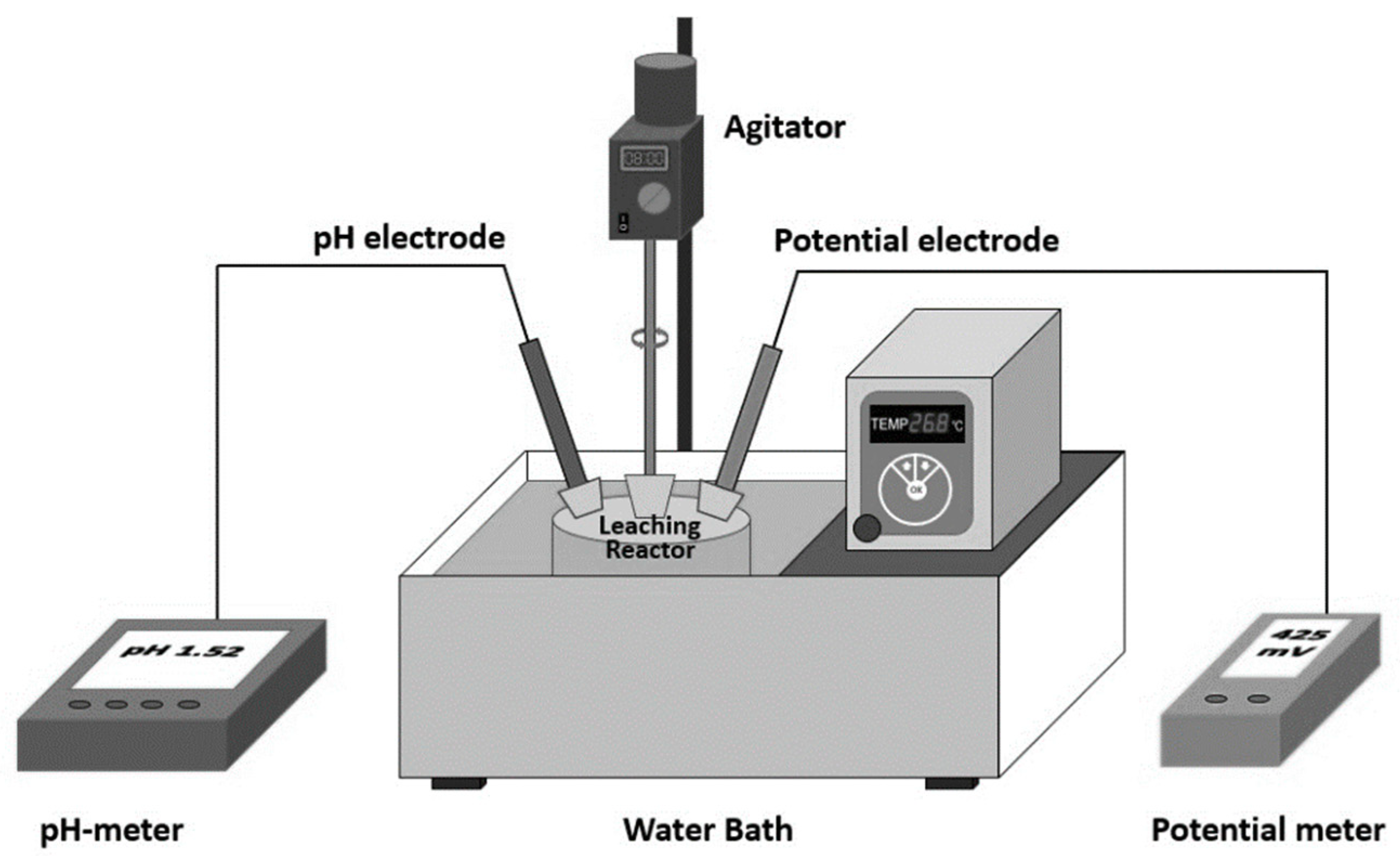

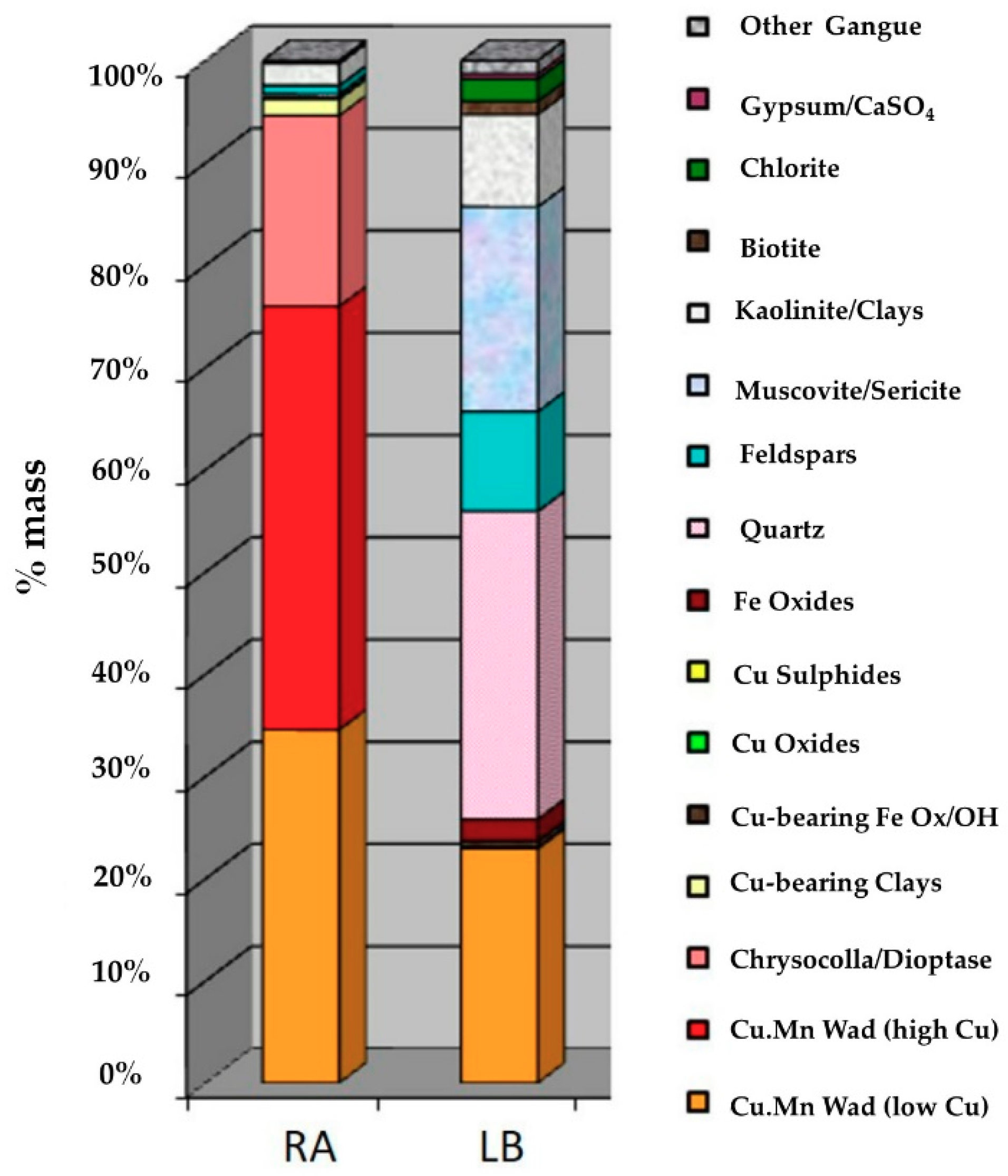
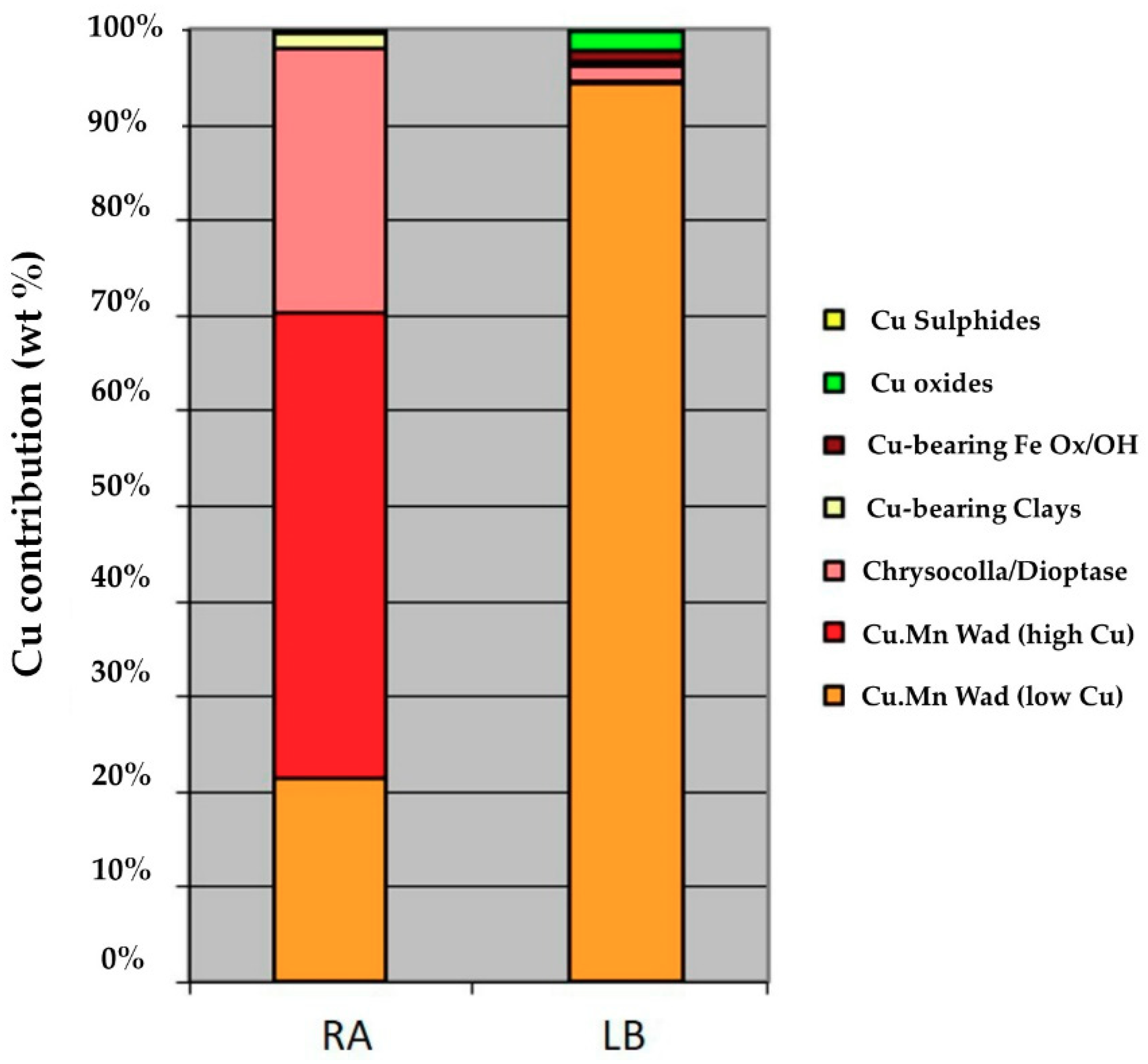


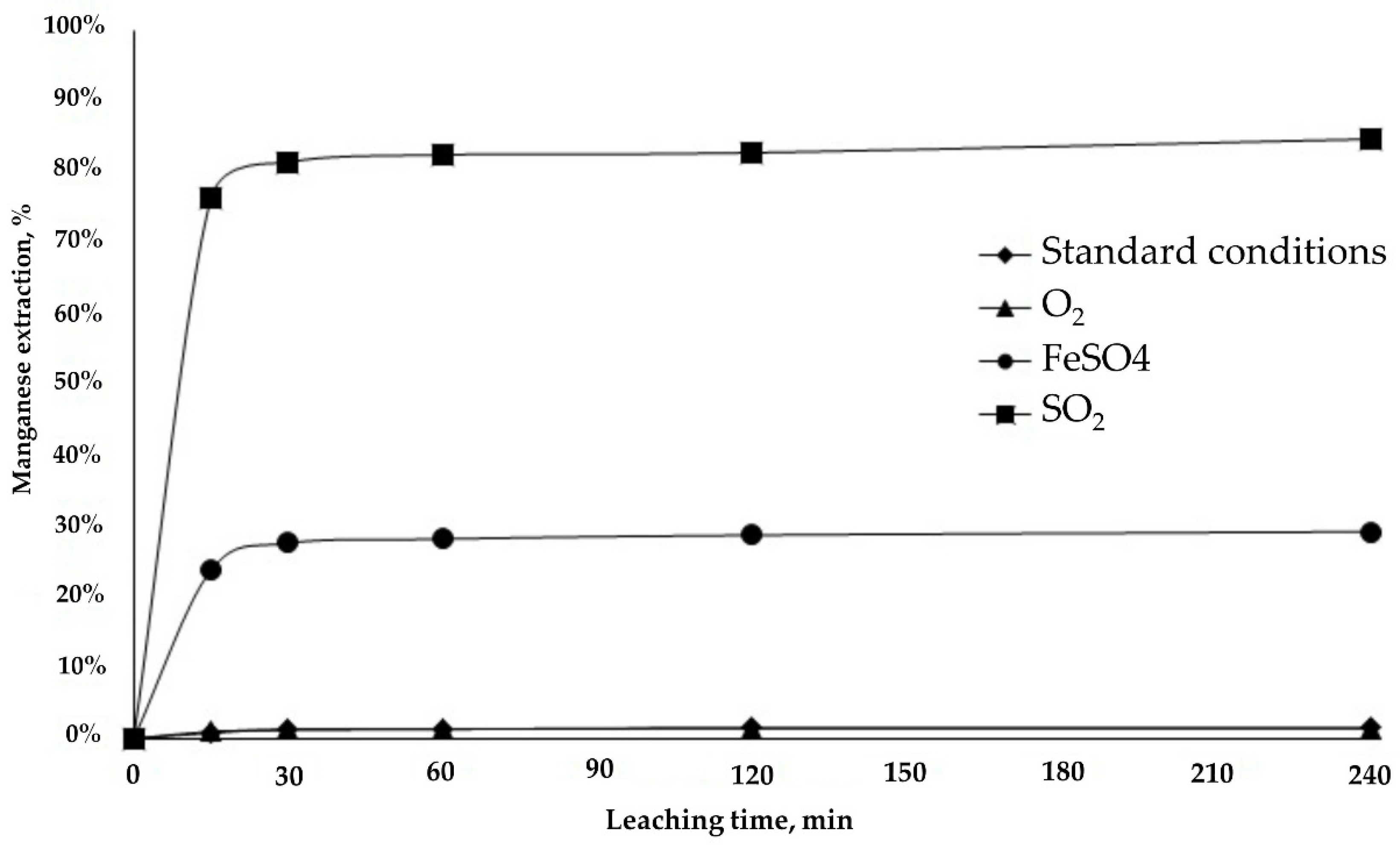

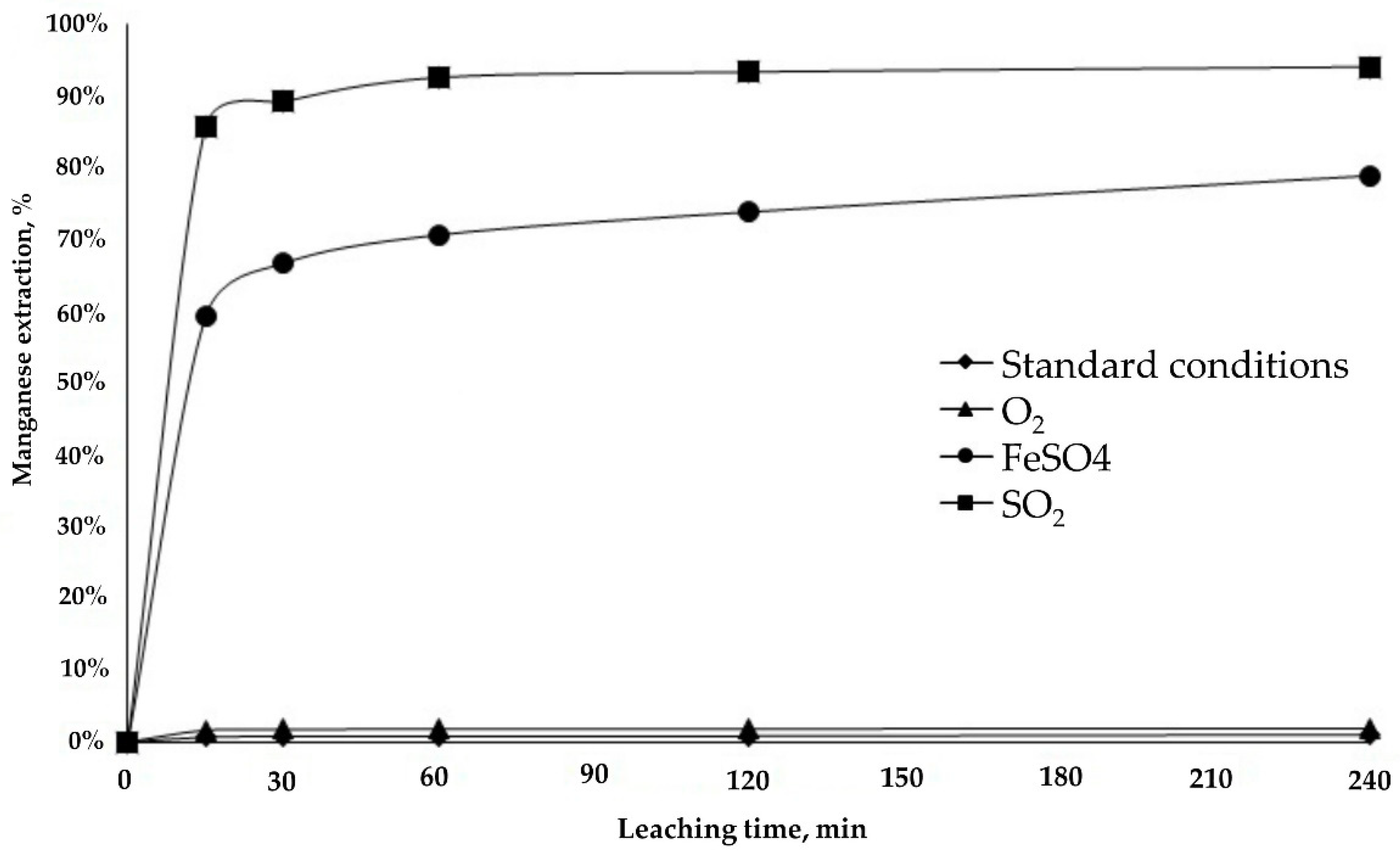

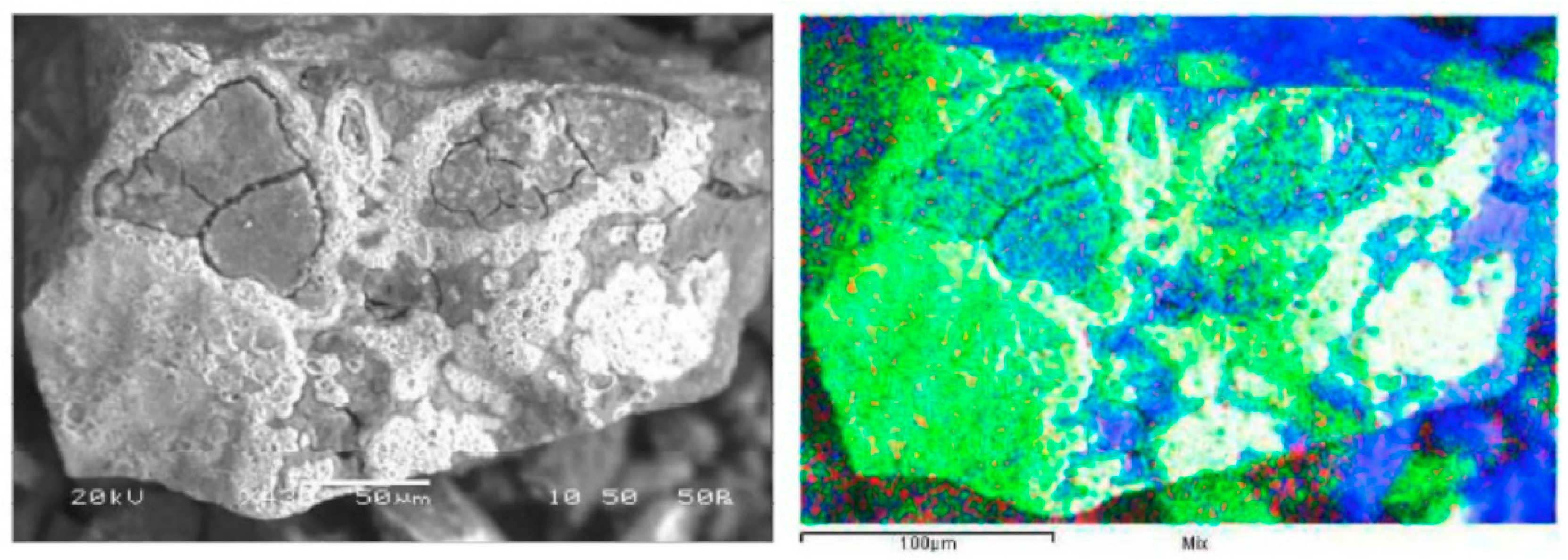
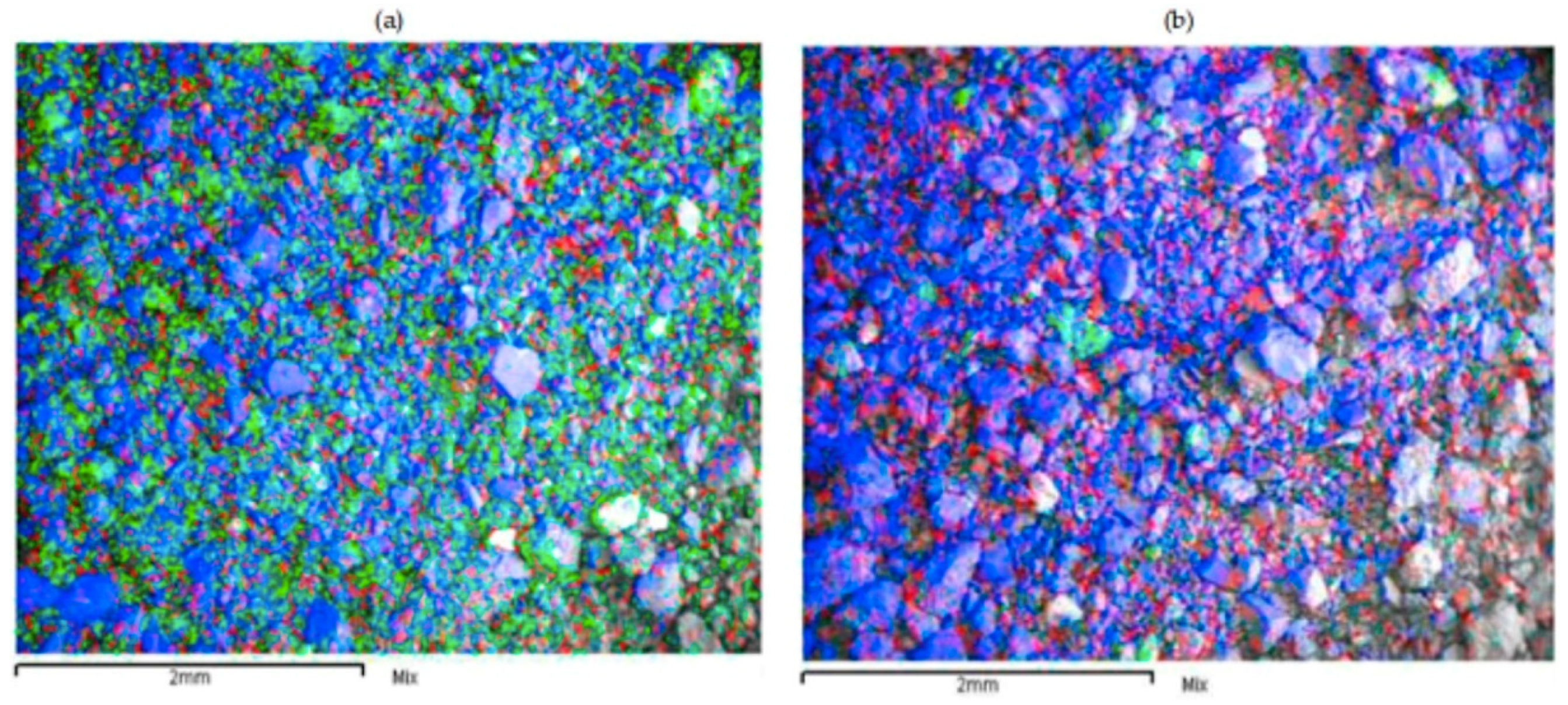
| Sample | Cu(T) (%) | Fe(T) (%) | Mn(T) (%) |
|---|---|---|---|
| RA | 22.8 | 0.36 | 8.68 |
| LB | 2.59 | 2.56 | 2.48 |
| Element | O | Mg | Al | Si | S | K | Ca | Ti | Mn | Fe | Cu | Mo |
|---|---|---|---|---|---|---|---|---|---|---|---|---|
| % (wt) | 51.9 | 0.93 | 8.31 | 23.6 | 0.30 | 3.38 | 0.56 | 0.35 | 3.77 | 3.41 | 3.02 | 0.48 |
© 2019 by the authors. Licensee MDPI, Basel, Switzerland. This article is an open access article distributed under the terms and conditions of the Creative Commons Attribution (CC BY) license (http://creativecommons.org/licenses/by/4.0/).
Share and Cite
Benavente, O.; Hernández, M.C.; Melo, E.; Núñez, D.; Quezada, V.; Zepeda, Y. Copper Dissolution from Black Copper Ore under Oxidizing and Reducing Conditions. Metals 2019, 9, 799. https://doi.org/10.3390/met9070799
Benavente O, Hernández MC, Melo E, Núñez D, Quezada V, Zepeda Y. Copper Dissolution from Black Copper Ore under Oxidizing and Reducing Conditions. Metals. 2019; 9(7):799. https://doi.org/10.3390/met9070799
Chicago/Turabian StyleBenavente, Oscar, María Cecilia Hernández, Evelyn Melo, Damián Núñez, Víctor Quezada, and Yuri Zepeda. 2019. "Copper Dissolution from Black Copper Ore under Oxidizing and Reducing Conditions" Metals 9, no. 7: 799. https://doi.org/10.3390/met9070799
APA StyleBenavente, O., Hernández, M. C., Melo, E., Núñez, D., Quezada, V., & Zepeda, Y. (2019). Copper Dissolution from Black Copper Ore under Oxidizing and Reducing Conditions. Metals, 9(7), 799. https://doi.org/10.3390/met9070799







